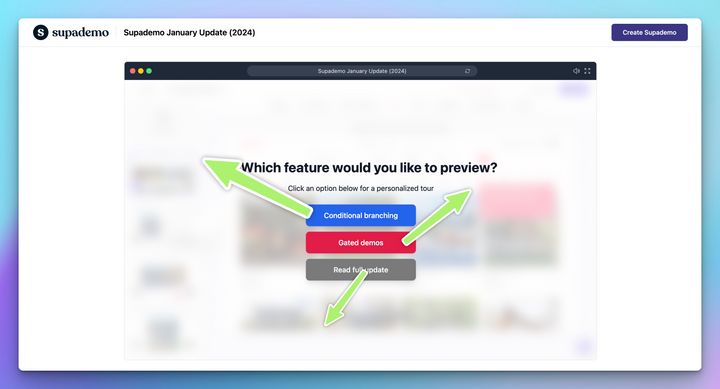In today's rapidly evolving business landscape, the way software is sold has undergone a dramatic transformation. Gone are the days when customers had to rely solely on salespeople to understand the value of a software solution. Instead, a new approach called product-led sales has emerged, putting the product itself at the forefront of the sales process. In this article, we will explore the concept of product-led sales, its benefits, and how it is revolutionizing the software industry.
The Traditional Sales Model: Telling, Not Showing
Traditionally, selling software involved a lengthy and often cumbersome process. Prospective customers had to book demos with sales representatives to get a glimpse of what the software could do for them. The sales reps would focus on explaining how the product could benefit the customers, often leading to a sales-led go-to-market strategy.
This sales-led approach resulted in a significant amount of friction in the buying process. Customers had to rely on the sales rep's interpretation of the product's value, which didn't always align with their actual experience. This disconnect between the perceived value and the experienced value often led to dissatisfaction and a high churn rate.
The Product-Led Sales Revolution
Product-led sales turns the traditional sales model on its head. Instead of relying on sales reps to communicate the value of the product, companies adopting this approach give the "keys" of their product to the customers. The focus shifts from telling people the value to showing them the value through a self-serve experience.
The idea behind product-led sales is to help customers become successful using the product themselves, leading to an effortless upgrade to a paid plan. By letting customers experience the value firsthand, companies build trust and loyalty, resulting in a more sustainable and profitable customer base.
The Shift in Buying Behavior
Several factors have contributed to the rise of product-led sales. One key factor is the decreasing cost of building a SaaS company. With the low barrier to entry, competition has become fierce, and customer acquisition costs have skyrocketed. Traditional marketing channels like Facebook, Twitter, and LinkedIn have become more expensive, making it challenging for companies to acquire customers through traditional sales-led strategies.
At the same time, customer willingness to pay for features has dropped significantly. As a result, companies that solely rely on a sales-led go-to-market strategy are at risk of being disrupted. To stay competitive, businesses need to adapt and find new ways to attract and retain customers.
The Pros and Cons of Sales-Led Go-to-Market Strategy
While the rise of product-led sales is compelling, there are still scenarios where a sales-led go-to-market strategy makes sense. Let's explore the pros and cons of this approach:
Pros of Sales-Led Go-to-Market Strategy
Ability to close high Lifetime Value (LTV) customers: A sales-led approach is ideal for closing high-value customers with a significant Annual Contract Value (ACV). This can lead to substantial revenue, but it also comes with the risk of poor revenue diversity.
Perfect for hyper-niche solutions: If your product serves a small Total Addressable Market (TAM), a sales-led model may be more appropriate. Building strong relationships with your niche market can lead to faster growth and success.
Perfect for new categories: When introducing a new category, a sales-led approach allows you to educate customers and understand their pain points. This understanding can shape your product and strategy, setting the stage for future growth.
Cons of Sales-Led Go-to-Market Strategy
High customer acquisition costs (CAC): A sales-led approach often results in high CAC due to lengthy sales cycles and expensive sales teams. Passing these costs to customers can make your product less competitive in the market.
The customer acquisition model is leaky: The traditional MQL model has a low conversion rate, with only a small percentage of leads resulting in closed business. The focus on creating friction in the buying process can lead to a disconnect between marketing and sales efforts.
Organizational structure hinders product development: In a sales-led organization, the product is often an afterthought. Sales-driven decisions and customer demands can divert resources away from product development, hindering innovation and growth.
The Benefits of Product-Led Growth
Product-led growth offers numerous benefits that can give companies a competitive edge in the market. Let's explore some of these advantages:
Dominant growth engine
Product-led businesses tend to scale faster than their competitors. By offering a free trial or freemium model, they widen their top-of-funnel, allowing prospects to evaluate the product earlier in the customer journey. This faster evaluation process can lead to quicker conversions and upgrades.
Significantly lower CAC
Product-led businesses enjoy lower customer acquisition costs. By allowing prospects to onboard themselves and experience the value of the product, sales cycles are accelerated. This reduced time-to-value increases the likelihood of converting free users into paying customers. Furthermore, product-led businesses can achieve higher revenue-per-employee, as less hand-holding is required.
Better user experience
Product-led businesses prioritize the user experience across all departments. Marketing, sales, customer success, and engineering teams all collaborate to create a seamless experience for customers. By leveraging the product to drive growth, these companies ensure that every touchpoint with the customer is focused on delivering value.
The Role of Sales in a Product-Led Organization
While product-led businesses can thrive without a traditional sales team, there are situations where sales can play a crucial role. The decision to hire a sales team depends on the Lifetime Value (LTV) of your customers. If your product has a high LTV, a high-touch sales model may be necessary for enterprise-level sales. However, even in product-led organizations, sales teams should focus on providing support and guidance rather than driving the entire sales process.
Conclusion
The rise of product-led sales represents a paradigm shift in the way software is sold. By putting the product at the center of the sales process, companies can provide customers with a self-serve experience that builds trust, loyalty, and long-term success. While a sales-led go-to-market strategy still has its merits in certain scenarios, product-led growth offers significant advantages in terms of scalability, lower customer acquisition costs, and improved user experience. As the software industry continues to evolve, embracing a product-led approach will become increasingly crucial for companies to stay competitive and meet customer expectations.




